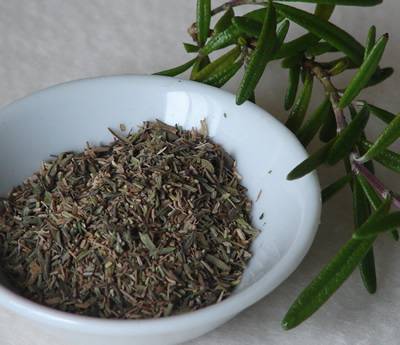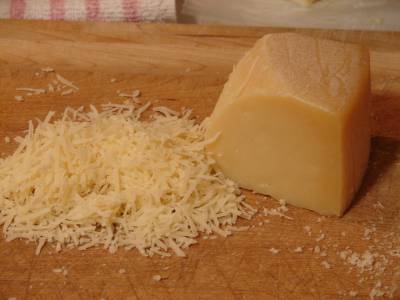After calculating many food network recipes, it’s easy to see a common thread as to which ingredients most increase the price. The inclusion of one of these ingredients will many times decide whether or not a recipe will turn out to be expensive or reasonable. So what ingredients usually bring up the cost in recipes and what can you do to reduce that cost? common thread as to which ingredients most increase the price. The inclusion of one of these ingredients will many times decide whether or not a recipe will turn out to be expensive or reasonable. So what ingredients usually bring up the cost in recipes and what can you do to reduce that cost?
- Cured Meats - Prusciutto, pancetta etc…
Some Italian cured meats can be outrageously expensive in the U.S. For cheaper alternatives, try to substitute bacon or salami and change the cooking instructions accordingly.
- Fresh & Aged Cheeses - Parmesan, Pecorino, Buffalo Mozzarella etc…
Some recipes call for large amounts of fresh cheeses, such as goat cheese, mascarpone or buffalo mozzarella – or aged cheeses such as Parmesan and Pecorino. And while cheese is wonderfully flavorful and tasty, it can make a dish substantially more expensive. There is not too much one can do to reduce costs here, except to buy a cheaper cheese, or use less of a more expensive cheese. - Fresh Herbs
Unless you have your own herb garden where you grow a lot of fresh basil, parsley, thyme and sage – fresh herbs can sometimes become the most expensive part in some recipes – especially if it calls for large amounts. Sure, fresh herbs provide a lot of flavor, but unless herbs are in season and you can get a nice deal at your local farmer’s market, try to use cheaper options such as fresh parsley or cilantro which are often more reasonable. a lot of flavor, but unless herbs are in season and you can get a nice deal at your local farmer’s market, try to use cheaper options such as fresh parsley or cilantro which are often more reasonable.
- Fresh Vegetables
It’s too bad that fresh vegetables cost as much as they do. If for example, you’re making an asparagus or artichoke dish when these vegetables are not in season – they can cost more than it’s worth. Solution: buy frozen vegetables when they’re not in season, they usually taste fine, and prices are often much cheaper.
- White Wine
Sometimes when a recipe calls for a small amount of white wine, it’s certainly unnecessary to open a completely new bottle. Instead, we like to use Dry Vermouth for splashes of flavor – it provides excellent taste for a much lower cost, plus it’s convenient. - Red Wine
If a recipe calls for a whole bottle (or two) of red wine - don't use a $10 bottle. Yes, commonly you hear "Don't cook with a bottle you wouldn't drink", however we have found that if you use a cheaper blended wine such as Chianti, the flavors won't be as harshly prominent, and you can safely use a $5 - $6 bottle... the dish will still taste excellent. - Vanilla Beans
Yes, yes vanilla beans provide so much sweet flavor. However, if you’re living on a budget, they are almost certainly out of the question. Instead, use a cheaper vanilla extract – or buy one vanilla bean and either place it in alcohol to make your own extract, or pulse it with sugar to make your own vanilla sugar. That way you can make a real vanilla bean go much further. question. Instead, use a cheaper vanilla extract – or buy one vanilla bean and either place it in alcohol to make your own extract, or pulse it with sugar to make your own vanilla sugar. That way you can make a real vanilla bean go much further.
- Kalamata Olives
Kalamata Olives are so tasty and provide so much flavor, it’s a big shame they are so expensive. If you find these olives a little too pricey for your budget, then one option is to use regular black olives in a dish and add one or two minced sardines. The sardines will provide a similar salty flavor and add more complexity to the dish – without tasting overly “fishy.”
- Bread
Sometimes a recipe calls for a fancy crusty Italian or French bread, or perhaps a buttery Challah which is either outrageously expensive, or you can’t find a loaf at all, depending on where you live. Then, your best bet is to bake yourself. And yes, this does probably sound completely unreasonable to most people, however baking your own bread is not as difficult as it seems. Once you try it out, you might just find it to be so much fun and so interesting, you’ll be wondering why you haven’t tried it out before.
- Extra Virgin Olive Oil
This is a dead-simple tip. Many Italian recipes call for large amounts of extra virgin olive oil. Unfortunately, good quality extra virgin olive oil is not cheap, and if a recipe calls for half a cup or a cup, then it adds up. Solution: simply use a cheaper oil than the recipe calls for, if a large amount is required.
- Frying Oil
If you are creating a recipe where frying is required, what type of oil you use will make a big difference in the final price of the dish. Many chefs recommend frying meats and vegetables in peanut oil due to its high smoke point. However, peanut oil can be quite expensive, and even though you can filter the oil after frying and use it a second time, it can still add up to quite a high cost. Instead, use regular vegetable oil or canola oil when frying. It won’t make much of a difference in the final product, and it’s considerably cheaper.
|

